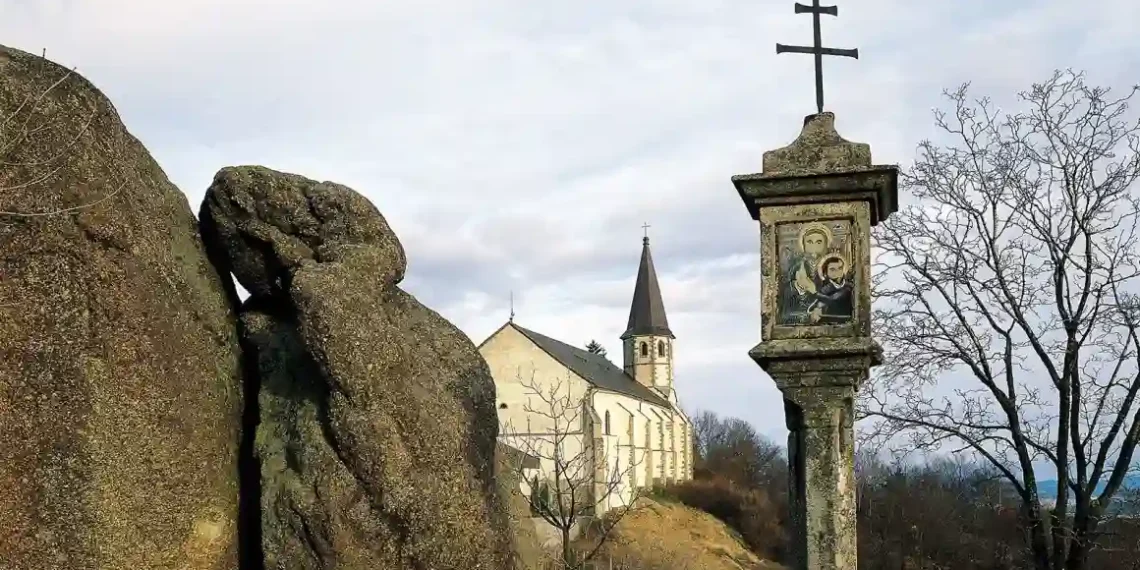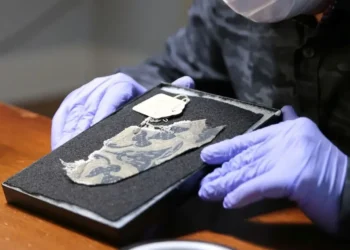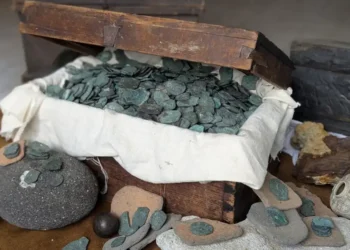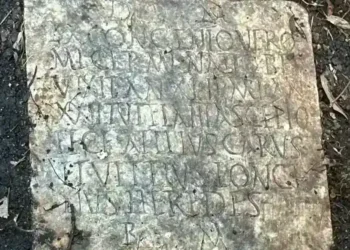Mysterious Mummy Unveiled: New Findings Shed Light on the ‘Air-Dried Chaplain’
For centuries, a mummified body stored in a remote Alpine village church crypt has sparked intrigue and speculation. Thought to be the remains of an 18th-century clergyman who died from an infectious disease, the so-called “air-dried chaplain” was believed to have been preserved in an unusually well-maintained state after being exhumed from its grave.
Local lore claimed the body had been placed in the St. Thomas am Blasenstein church crypt in Austria, with rumors of miraculous healing powers attracting pilgrims. Over the years, the mummy’s preservation — with skin and tissue still intact — became legendary. However, a more recent scientific analysis has unveiled some surprising revelations, shifting the narrative and providing new answers about the body’s true history.
A team of scientists led by Professor Andreas Nerlich, a medical expert at Ludwig-Maximilians University of Munich, recently had the opportunity to examine the mummy. This examination came after a water leak prompted renovations in the crypt, creating an unexpected opportunity for an in-depth scientific analysis.
The researchers used advanced methods such as CT scans, radiocarbon dating, and chemical analysis of bone and tissue samples to uncover fresh insights into the mummy’s identity and preservation. Their findings, published in the journal Frontiers in Medicine, offer a much clearer picture of this enigmatic figure.
What the team found was startling: the mummy’s abdominal and pelvic cavities contained materials such as wood chips from fir and spruce trees, as well as linen, hemp, and flax fabric, some of which was delicately embroidered. Toxicological analysis also revealed traces of zinc chloride and other chemicals.
“This was a complete surprise,” Nerlich said. “The body walls were completely intact, and yet we found foreign materials inside.”
Through careful analysis, the researchers hypothesized that these materials were inserted into the body, likely through the rectum. The combination of wood chips, fabric, and zinc chloride may have contributed to the mummy’s preservation by binding water and reducing bacterial growth in the bowel.
This preservation method, though unconventional, hasn’t been documented in ancient texts. It’s believed that this technique may have been employed in the 18th century to preserve a body for transport or public display.
After extensive testing, the team was able to confirm that the mummified body belonged to Franz Xaver Sidler von Rosenegg, an aristocrat who served as a monk and later the parish vicar at St. Thomas am Blasenstein. Sidler died in 1746 at the age of 37.
While the mummy had long been rumored to be Sidler, this was the first time that definitive evidence confirmed his identity. Radiocarbon dating placed his death between 1734 and 1780, and further analysis suggested that Sidler died at around 35 to 45 years of age — matching historical records.
The chemical isotopes found in the mummy’s bones also provided clues about his lifestyle. Sidler had a diet rich in grains and meat, consistent with a rural priest’s life. However, the study also indicated that, toward the end of his life, Sidler may have faced food shortages, possibly due to the disruptions of the War of Austrian Succession.
Contrary to earlier speculations that Sidler may have been poisoned, the study found no evidence of foul play. Instead, the researchers believe Sidler likely suffered from chronic tuberculosis, which ultimately led to his death.
Interestingly, a small glass sphere with holes at both ends — possibly part of a rosary set — was found inside the mummy. This object had been seen in early X-ray scans and was initially thought to be a capsule containing poison. However, further analysis revealed no evidence of poisoning.
While it’s clear that Sidler’s body wasn’t buried and exhumed, the team believes the mummy was likely prepared for a journey to Sidler’s “mother monastery,” 15 kilometers away. For reasons lost to history, the body was never transported, and it was left in the crypt, where it remained for centuries, drawing intrigue and wonder from those who encountered it.
This discovery is a reminder of how much remains to be learned from ancient human remains. As archaeologist Gino Caspari points out, mummies can provide invaluable insight into a society’s medical practices, dietary habits, and even attitudes toward death. The analysis of Sidler’s body adds a new layer to our understanding of mummification practices in Europe and reveals the complex techniques used to preserve human remains during the 18th century.
As the mystery of the “air-dried chaplain” unravels, scientists continue to explore the fascinating history hidden within this remarkable mummy, offering a rare glimpse into the past.
This article was rewritten by JournosNews.com based on verified reporting from trusted sources. The content has been independently reviewed, fact-checked, and edited for accuracy, neutrality, tone, and global readability in accordance with Google News and AdSense standards.
All opinions, quotes, or statements from contributors, experts, or sourced organizations do not necessarily reflect the views of JournosNews.com. JournosNews.com maintains full editorial independence from any external funders, sponsors, or organizations.
Stay informed with JournosNews.com — your trusted source for verified global reporting and in-depth analysis. Follow us on Google News, BlueSky, and X for real-time updates.













